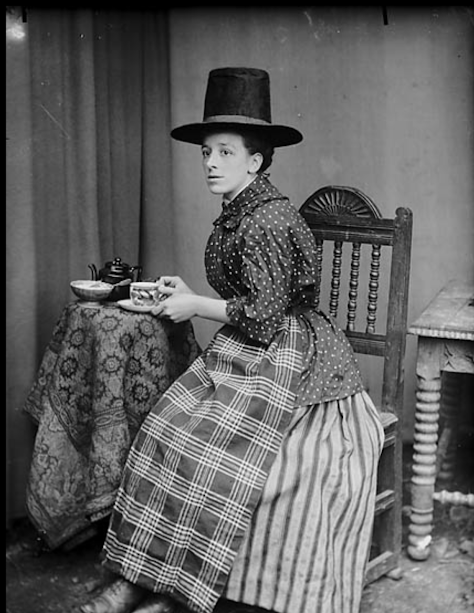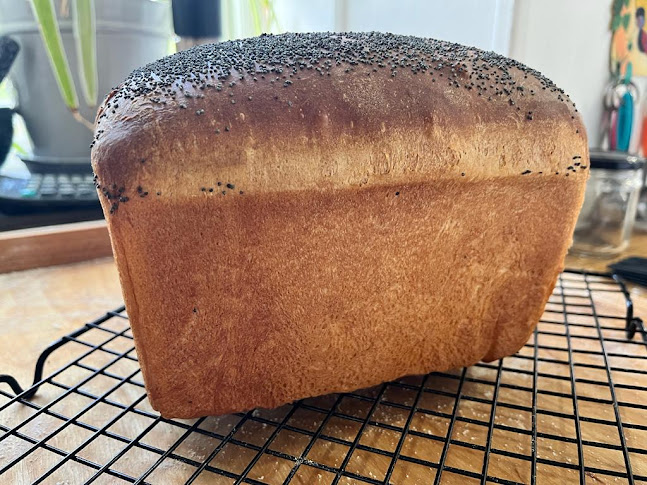Sunday Bread (Bara Can)
Welcome to another step-by-step recipe from BreadClub20. Why not drop by our main Facebook page by clicking here.... If you like what you see and enjoy the recipe, we hope you go on to join us by 'Liking' and 'Subscribing'.
As a young lad growing up in the North of England during the 1950s, Sunday was still a day of rest. Shops were closed, public houses bolted their doors and as young children, we attended Sunday School in the local Methodist Chapel.
Sunday dinner was a substantial affair. Beef, lamb and pork were often on the menu, but the chicken was still a speciality and often saved for Christmas or a very special occasion.
Afternoons were spent playing quietly, before coming in for 'afternoon tea' which was the last meal before bath, bed and an early night. After all, it was invariably school in the morning.
When I moved to Wales in 1973, Sundays were more or less the same. My wife, who I met while studying (I use the term loosely...studying that is, not wife...), had a similar upbringing in the county of Gwynedd in North Wales. For her, it was Chapel in the morning, then lunch and afternoon Sunday school (for adults and children alike) before play, tea, bath and bed.
It was still an extremely quiet day. In North Wales. It was a 'dry day' in certain counties, thanks to the traditions of the Chapels, and, as a young undergraduate, I'd have to travel to a 'wet county' to partake of a few beers on a Sunday evening. There was very little commercial trading allowed and generally, it was a 'day of rest'.
Sunday tea was as much a tradition in Wales as it had been for me, living across the border in England.
Mam would often serve bara brith (speckled bread) for Sunday tea-time and another local delicacy was Sunday bread, or Bara Can as it was known in some parts of Wales. It was a loaf baked for 'high days and holidays'.
Sunday bread is a lovely loaf, baked to a light and crispy crust, and one that made lovely bread and butter slices or delicate sandwiches.
Let's make it.
"Toes hardd ydoedd, fel bron odro ydoedd"
"It was a beautiful dough, like a milking breast"
INGREDIENTS
450 gms strong white bread flour
25 gms sugar (preferably caster or another very white sugar)
25 gms unsalted butter (warm)
2 flat teaspoons crushed sea salt
200 gms tepid milk (whole, skimmed, semi-skimmed, plant-based)
1 egg (medium and beaten)
for the yeast...
100 gms tepid water
1 teaspoon honey
1 teaspoon of dried yeast, activated with a teaspoon of honey in 100 gms tepid wter
METHOD
1. Activate the yeast using a teaspoon of honey and 100 gms of water.
2. Mix the flour with the salt and the sugar.
3. Crumble in the butter and the beaten egg.
4. Add the remaining ingredients and the yeast.
5. Mix thoroughly and then knead until you have a soft and silky dough.
6. Place in a lightly-oiled bowl, cover and leave somewhere warm to rise until doubled. (about 1½ hours at 24⁰C)
 |
| Before first proof |
 |
| After first proof |
 |
| Start of second proof |
9. Preheat the oven to 190⁰C.
10. Bake for 30 minutes.
11. Cool on a rack.
12. Slice and enjoy! Happy baking...Pobi Hapus
 |
| Miss Ada Davies, who lived in our village of Bontuchel, North Wales, taking tea. c1880 |
 |
| A middle-class Northern English family enjoying Sunday tea in the 1950s. |






Comments
Post a Comment